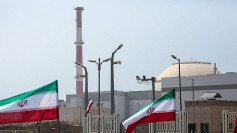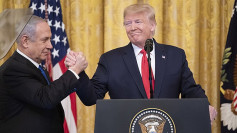It's still a lower third quarter, but better than expected, for the US with only consumer spending and housing investments saving the economy amidst a business investment drop.
Adjusted for inflation and seasonality, the Commerce Department said that the value of all goods and services made in the US, or its gross domestic product (GDP), increased at an annual rate of 1.9% from July to September.
Michael Feroli, an economist at JPMorgan Chase & Co, said that the economic data is "consistent with an economy that's just moving back towards trend."
The better-than-expected growth rate was caused by consumer and government spending coupled with exports and residential investments.
As expected, because of the trade issues with China, business spending declined for the second quarter in a row with investment in structures dropping sharply, particularly those related to the natural gas and petroleum industries.
The weak number in business-investment is attributed to political uncertainty and the trade tariffs taking its toll on businesses' decisions to spend.
Hours after the GDP report's release, the Federal Reserve sprang into action and cut the benchmark federal-funds rate by a quarter percentage point, somewhere between 1.50% and 1.75% and in the process began to play down expectations for further cuts.
This cut was the central bank's third since late July done as a way of protecting the economy against a lowering in business spending.
Fed Chairman Jerome Powell confirmed that this step was taken "to help keep the U.S. economy strong."
He pointed out that the US economy, in its 11th year of expansion, is growing at a moderate rate.
Consumer spending averaged to a 2.9% annual rate in the third quarter, from the 4.6% rate during the second.
Consumer spending increased by 2.5% in the third quarter from a year earlier.
American consumers are currently spending on big-ticket items like appliances and cars.
However, their spending on services slowed.
Stephen Snow, a high-school teacher in New Port Richey, Fla., who invested in a new boat this summer is looking forward to getting a golf cart too but will wait for his tax return because the economy "is kind of up and down."
Meanwhile, the nonresidential fixed investment which includes business spending on software, research, and development, equipment and structures declined at a 3.0% rate.
Boeing Co.'s 737 MAX probes made equipment spending on aircraft go down as well.
Private investment in aircraft equipment was less than half the $48.1 billion rate in the final quarter of 2018, ending at $22.5 billion annualized and adjusted for inflation in the third quarter.






